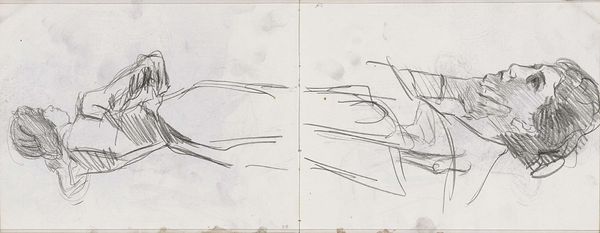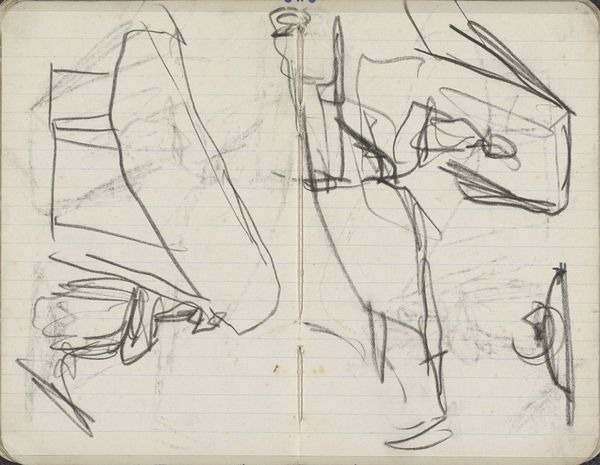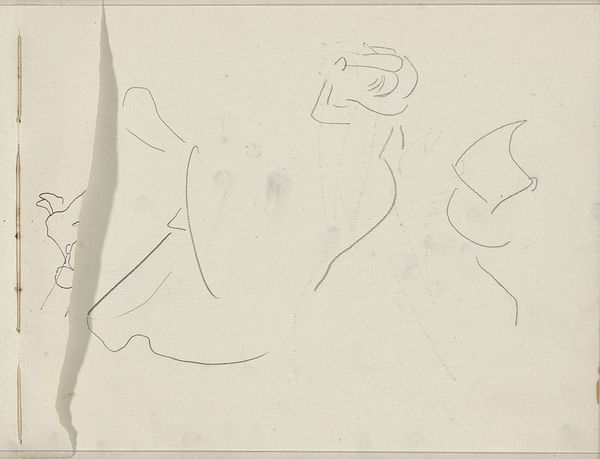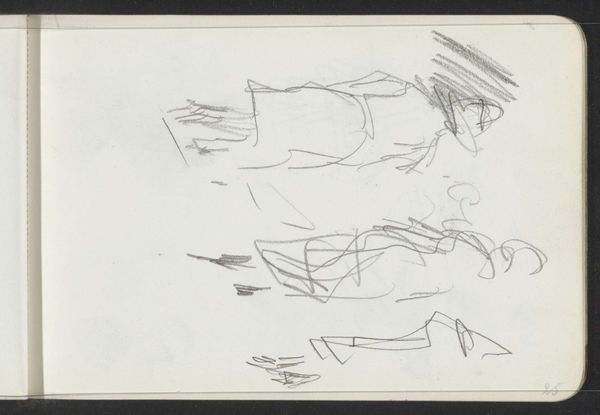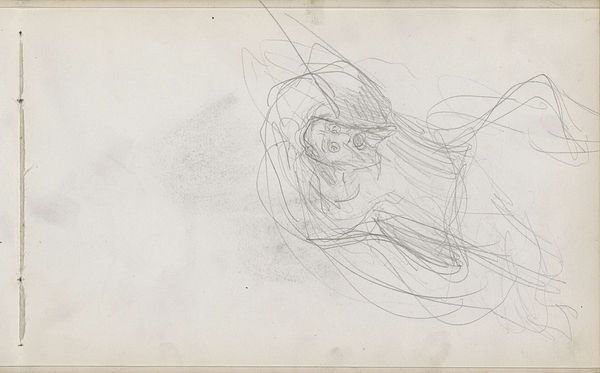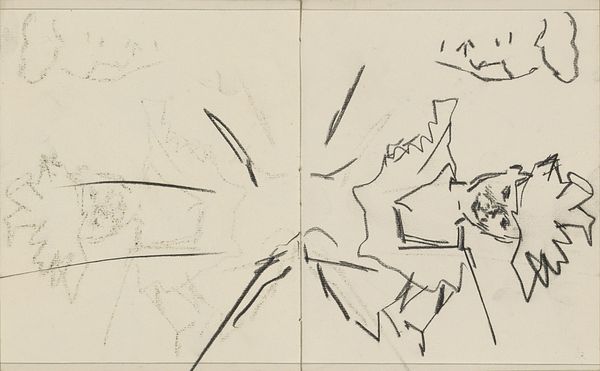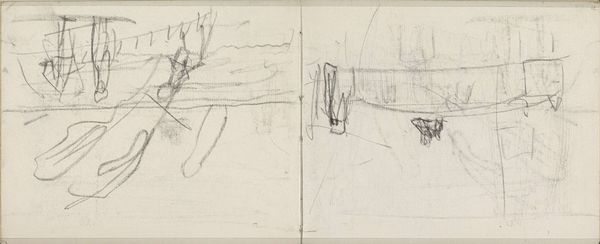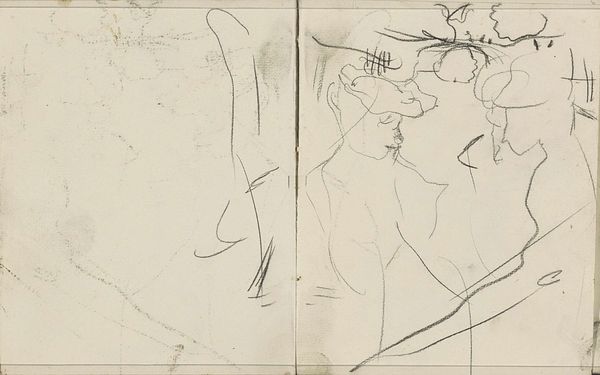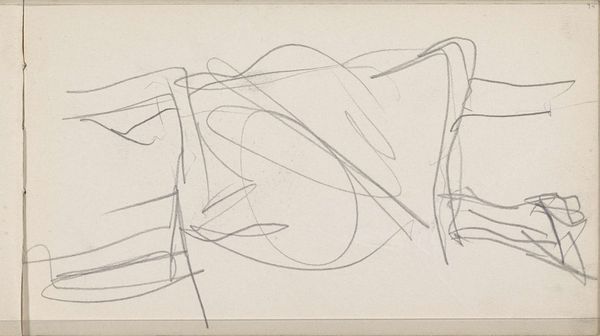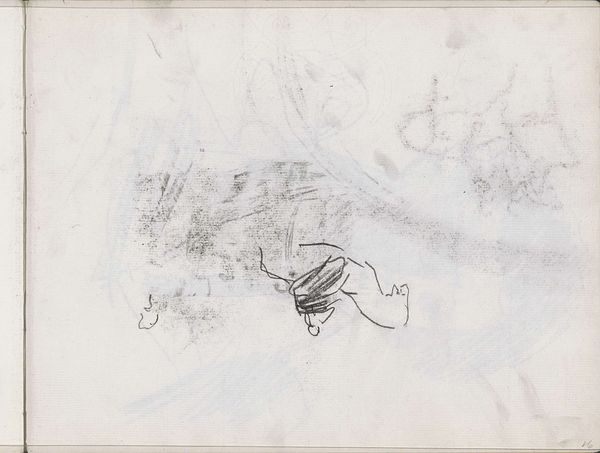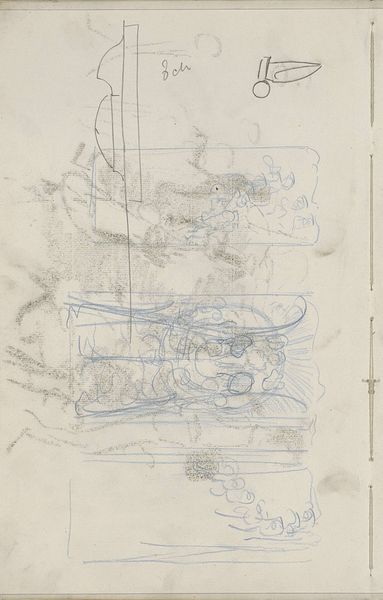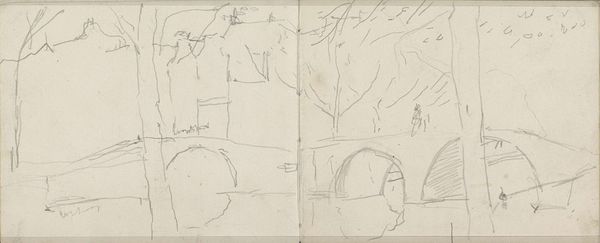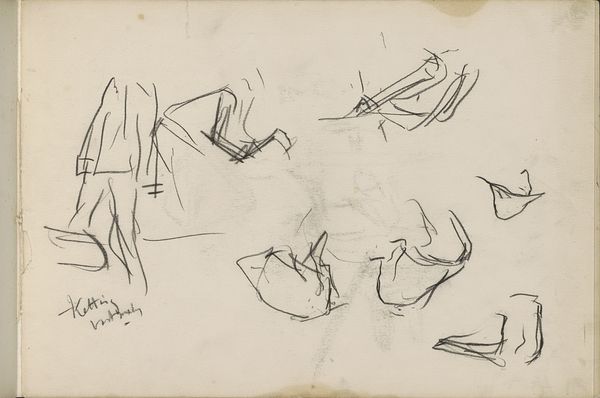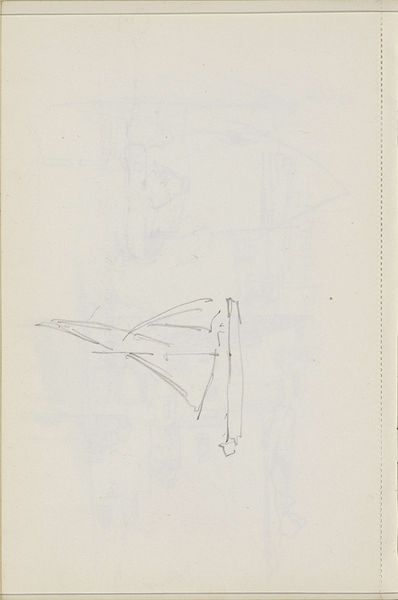
Copyright: Rijks Museum: Open Domain
Curator: What strikes you first about this pencil drawing by Isaac Israels, titled "Standing Female Nude"? It's estimated to have been created between 1875 and 1934, and resides here at the Rijksmuseum. Editor: There's something intimate and off-the-cuff about it, like sneaking a peek into someone's personal sketchbook. It feels unfinished, but somehow, the sketchiness is what gives it life. It is more about movement and an immediate, playful expression. Curator: Precisely. Israels had a keen eye for capturing everyday life. While associated with Dutch Impressionism, it's vital to consider the academic background he possessed from his studies in The Hague. This drawing, more than a simple nude, reflects his interest in how art served the emerging social visibility of women during his time. Editor: Social visibility, huh? To me, she’s not just some symbol or study. Look at the relaxed lines – she feels present, almost like I just walked in on her getting dressed. There's none of the stuffiness or idealization you see in a lot of traditional nudes. It has that rawness I always strive for. Curator: A very relevant point to consider. In art historical terms, however, the 'unfinished' aesthetic of Israels points to the emerging influence of modernity on artistic practices. Artists were questioning traditional notions of completion and instead favoring spontaneity. This shift was also related to shifts in power, to increased influence of artist-led spaces as important as formal academies, and Israels positioned himself at that intersection. Editor: Well, whatever the reason, that sense of immediacy really works for me. It has character that I often feel is lost with highly finished artwork. There is space for my own imagination, which makes me part of her story too. I feel the energy from his first impulsive stroke as if his hand moves across the page. Curator: In closing, I'd say it is drawings like this that can unlock our deeper understanding of artistic innovation during a time when modern sensibilities were beginning to transform traditional academic form. Editor: I second that. It is the soul of art – a raw expression and playful movement that gives me new insights into the past but also into myself.
Comments
No comments
Be the first to comment and join the conversation on the ultimate creative platform.
